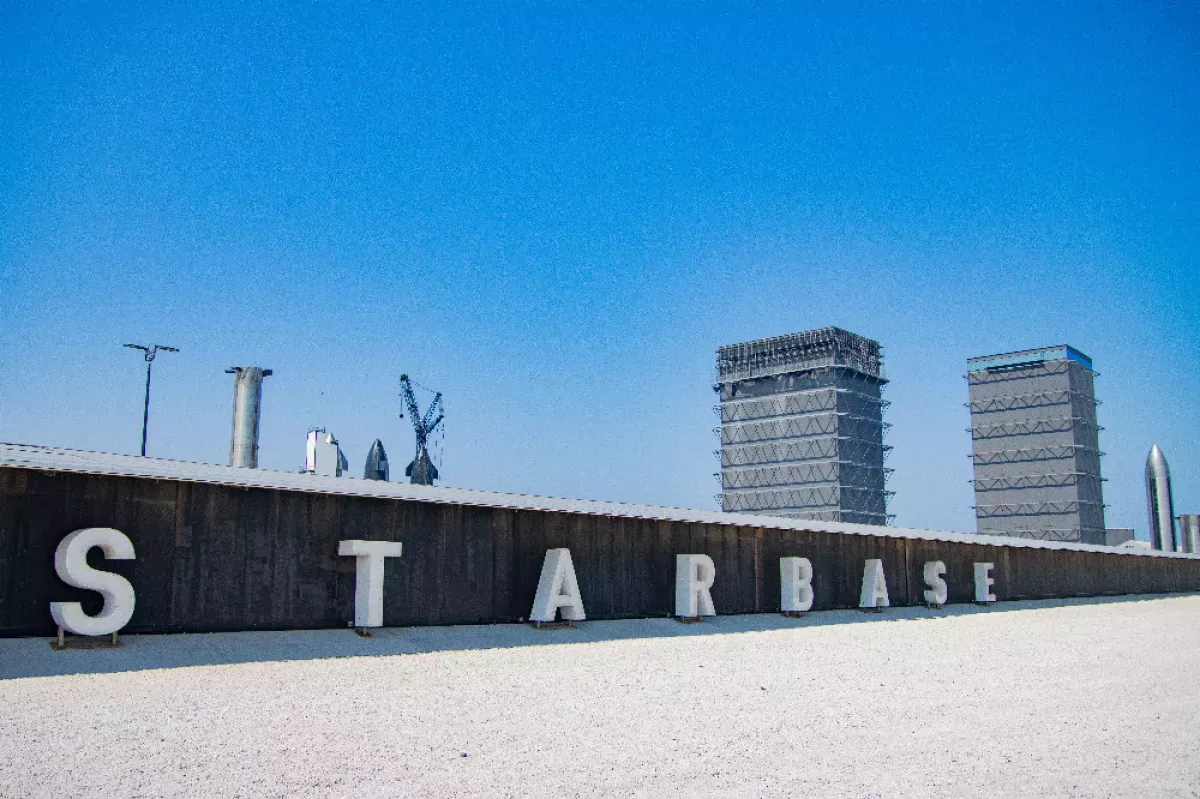SpaceX, founded in 2002, is a private American aerospace manufacturer and space transportation company. Headquartered in Starbase, Texas, SpaceX is renowned for its advancements in rocket propulsion, reusable launch vehicles, human spaceflight, and satellite constellation technology. By 2025, it had become the world's leading space launch provider, surpassing competitors and national programs. SpaceX maintains close working relationships with NASA and the United States Armed Forces through government contracts.
2 hours ago : SpaceX Transporter-15 mission: Falcon 9 launch attempt, carrying 140 spacecraft to orbit.
SpaceX launched the Transporter-15 mission aboard a Falcon 9 rocket, carrying about 140 spacecraft. The mission faced an initial scrub but aimed for a subsequent launch from Vandenberg Space Force Base.
2001: Musk Joins Mars Society
In early 2001, Elon Musk met Robert Zubrin and donated $100,000 to his Mars Society, joining its board of directors and announced Mars Oasis, a project to land a greenhouse and grow plants on Mars. Musk initially attempted to acquire a Dnepr launch vehicle for the project.
2002: SpaceX Founded
In 2002, Space Exploration Technologies Corp., or SpaceX, was founded as a private American aerospace company and space transportation company.
2004: SpaceX Protests NASA Contract
In 2004, SpaceX protested a sole-source NASA contract awarded to Kistler Aerospace to the Government Accountability Office (GAO). NASA then withdrew the contract and formed the COTS program.
November 2005: SpaceX Employee Count
By November 2005, SpaceX had grown to 160 employees, with Elon Musk personally interviewing and approving all early hires.
2005: Human-Rated Space Program Plans
In 2005, SpaceX announced its plans to develop a human-rated commercial space program by the end of the decade, which would later become the Dragon spacecraft.
2005: Falcon 9 Development
In 2005, SpaceX decided to proceed with the development of the Falcon 9, a reusable heavier lift vehicle.
2005: SpaceX awarded IDIQ contract with the Air Force
In 2005, SpaceX was awarded an Indefinite Delivery/Indefinite Quantity (IDIQ) contract, allowing the United States Air Force to purchase up to $100 million worth of launches from the company.
2006: ULA held a monopoly over U.S. Air Force launches
In 2006 United Launch Alliance (ULA) held a monopoly over U.S. Air Force launches of classified payloads.
2006: NASA Awards SpaceX COTS Contract
In 2006, NASA selected SpaceX and awarded the company $396 million to provide crew and cargo resupply demonstration contracts to the International Space Station (ISS) under the Commercial Orbital Transportation Services (COTS) program.
2006: SpaceX wins NASA COTS contract
In 2006, SpaceX was awarded a NASA Commercial Orbital Transportation Services (COTS) Phase 1 contract, valued at $396 million. This contract aimed to demonstrate cargo delivery to the ISS and included a possible option for crew transport, using the Dragon spacecraft and Falcon 9 launch vehicle.
2006: First Falcon 1 Launch
In 2006, the Falcon 1 had its first launch. The Falcon 1 was the first privately funded, liquid-fueled rocket to reach orbit.
September 28, 2008: First Successful Falcon 1 Launch
On September 28, 2008, SpaceX achieved its first successful launch with the Falcon 1 on its fourth attempt, marking a turning point for the company.
2008: NASA awards first CRS contracts
In 2008, NASA awarded the first Commercial Resupply Services (CRS) contracts, including a $1.6 billion contract to SpaceX for 12 cargo transport missions to the ISS, scheduled through 2016.
2008: Falcon 1 Successful Launch
In 2008, SpaceX's Falcon 1 successfully launched into orbit after three failed attempts, marking a significant milestone for the company.
2008: Third Falcon 1 Launch Failure
In 2008, the third Falcon 1 launch resulted in failure, pushing SpaceX to the brink of collapse.
July 2009: Retirement of Falcon 1
In July 2009, following its second successful launch, the Falcon 1 was retired to allow SpaceX to concentrate on the development of the Falcon 9. Gwynne Shotwell was also promoted to company president at this time.
2009: Falcon 1 retired in 2009 after five launches
SpaceX launched Falcon 1 five times between 2006 and 2009, with two successful launches before the rocket was retired in 2009.
June 2010: First Falcon 9 Launch
In June 2010, the Falcon 9 launched for the first time with the Dragon Spacecraft Qualification Unit, a mockup of the Dragon spacecraft, as part of the COTS contract.
December 2010: SpaceX COTS Demo Flight 1
In December 2010, SpaceX became the first private company to successfully launch, orbit, and recover a spacecraft with the launch of the SpaceX COTS Demo Flight 1 mission.
December 2010: First Operational Dragon Spacecraft Launch
In December 2010, the first operational Dragon spacecraft was launched aboard COTS Demo Flight 1, the Falcon 9's second flight, completing all its mission objectives after two orbits. By this time, SpaceX was manufacturing one Falcon 9 and Dragon every three months.
April 2011: NASA CCDev Contract
In April 2011, NASA issued a $75 million contract for SpaceX to develop an integrated launch escape system for Dragon as part of its second-round Commercial Crew Development (CCDev) program.
2011: SpaceX receives first CCDev contract
In 2011, SpaceX was awarded its first contract as part of NASA's Commercial Crew Development (CCDev) program, aimed at developing commercially operated spacecraft to deliver astronauts to the ISS.
2011: First crewed vehicle launched from the U.S. since 2011
May 30, 2020 marked the first time a crewed vehicle had launched from the U.S. since 2011.
May 2012: Dragon berths with the ISS during SpaceX COTS Demo Flight 2
In May 2012, Dragon successfully berthed with the ISS during the SpaceX COTS Demo Flight 2, marking the first time a private spacecraft achieved this milestone.
May 2012: Dragon Cargo Delivery to ISS
In May 2012, with the Dragon C2+ launch, Dragon became the first commercial spacecraft to deliver cargo to the International Space Station. The company's private equity valuation nearly doubled to $2.4 billion.
August 2012: NASA SAA Agreement
In August 2012, NASA awarded SpaceX a fixed-price Space Act Agreement (SAA) to produce a detailed design of the crew transportation system.
October 2012: SpaceX CRS-1 launched
In October 2012, SpaceX CRS-1, the first of 12 planned resupply missions, was launched, achieved orbit, berthed with the ISS, remained on station for 20 days, and then re-entered the atmosphere, splashing down in the Pacific Ocean.
December 2012: SpaceX announces first launch contracts with the DoD
In December 2012, SpaceX announced its first two launch contracts with the United States Department of Defense (DoD). The United States Air Force Space and Missile Systems Center awarded SpaceX two EELV-class missions: Deep Space Climate Observatory (DSCOVR) and Space Test Program 2 (STP-2).
2012: Commercial Resupply Services to ISS
In 2012, SpaceX completed all Commercial Orbital Transportation Services (COTS) test flights and began delivering Commercial Resupply Services (CRS) missions to the International Space Station (ISS). SpaceX also began developing hardware to make the Falcon 9 first stage reusable.
2012: SpaceX receives second CCDev contract
In 2012, SpaceX received another contract from NASA to continue the development and testing of its Dragon 2 spacecraft under the Commercial Crew Development (CCDev) program.
2012: No commercial launches from the country
Since 2012 there were no commercial launches from the country.
2012: Reusability Test Program Begins
SpaceX's active reusability test program began in late 2012 with testing low-altitude, low-speed aspects of the landing technology. The Falcon 9 prototypes performed vertical takeoffs and landings (VTOL).
2013: First Commercial Mission for Private Customer
In 2013, SpaceX launched its first commercial mission for a private customer.
2013: High-Velocity Booster Tests
In late 2013, SpaceX began high-velocity, high-altitude tests of the Falcon 9 booster atmospheric return technology, continuing its reusability program.
2013: Falcon 9 prices put pressure on competitors
Prior to 2013, the comsat launch market had been dominated by Arianespace and International Launch Services. In 2013 with SpaceX's low launch prices, especially for communications satellites, put market pressure on its competitors to lower their prices. Falcon 9 rockets were priced at $56.5 million per launch to low Earth orbit.
September 2014: Commercial Crew Transportation Capability (CCtCap) Contract
In September 2014, NASA awarded SpaceX the Commercial Crew Transportation Capability (CCtCap) contract to finalize the development of the Crew Transportation System, including flight tests and operational missions.
May 2015: SpaceX completes Crew Dragon Pad Abort Test
In May 2015, SpaceX completed the first key flight test of its Crew Dragon spacecraft, a Pad Abort Test, demonstrating the capsule's ability to safely escape from the launch pad in case of an emergency.
June 2015: Falcon 9 Failure During ISS Resupply
In late June 2015, the Falcon 9 had its first major failure during the seventh ISS resupply mission, CRS-7, due to a failed steel strut, causing the rocket to explode two minutes into the flight.
December 2015: First Successful Landing and Recovery
In December 2015, SpaceX achieved its first successful landing and recovery of a Falcon 9 first stage during Falcon 9 Flight 20.
2015: NASA extends Phase 1 CRS contracts
In 2015, NASA extended the Phase 1 CRS contracts, ordering an additional three resupply flights from SpaceX and then further extending the contract for a total of twenty cargo missions to the ISS.
2015: First Successful First-Stage Landing
In 2015, SpaceX demonstrated the first successful landing of a Falcon 9 first stage, a key step towards reusable rocket technology.
2015: ULA anticipates market slump
In 2015, anticipating a slump in domestic, military, and spy launches, United Launch Alliance (ULA) stated that it would go out of business unless it won commercial satellite launch orders and announced a major restructuring to decrease launch costs by half.
2015: Falcon 9 certified for NSSL
In 2015, the Falcon 9 v1.1 was certified for National Security Space Launch (NSSL), allowing SpaceX to contract launch services to the Air Force for classified payloads, breaking ULA's monopoly.
2015: DSCOVR launched on a Falcon 9 launch vehicle
The Deep Space Climate Observatory (DSCOVR) was launched on a Falcon 9 launch vehicle in 2015.
January 2016: Second phase of CRS contracts awarded
In January 2016, a second phase of CRS contracts was awarded, with SpaceX among the awardees. SpaceX was slated to fly up to nine additional CRS flights using the upgraded Dragon 2 spacecraft.
April 2016: First Drone Ship Landing
In April 2016, SpaceX achieved its first successful landing on the autonomous spaceport drone ship (ASDS) Of Course I Still Love You in the Atlantic Ocean.
April 2016: U.S. Air Force awards first national security launch to SpaceX
In April 2016, the U.S. Air Force awarded the first national security launch to SpaceX for $82.7 million to launch the second GPS III satellite, significantly less than previous missions.
September 2016: Falcon 9 Explosion During Static Fire
In early September 2016, a Falcon 9 exploded during a propellant fill operation for a pre-launch static fire test, destroying the AMOS-6 communications satellite. The explosion was caused by the liquid oxygen propellant turning so cold that it solidified and ignited with carbon composite helium vessels.
October 2016: Reused Falcon 9 Price Discount
By October 2016, SpaceX began offering customers a 10% price discount if they chose to fly their payload on a reused Falcon 9 first stage.
2016: CRS contract deliveries completed
By 2016, SpaceX had completed the deliveries outlined in the first CRS contracts awarded in 2008.
2016: Alleged sexual misconduct by Musk
In 2016, an article alleged that Musk engaged in sexual misconduct with a SpaceX flight attendant in a private jet.
January 2017: SpaceX Returns to Flight
In January 2017, SpaceX returned to flight after a four-month launch hiatus following the Falcon 9 explosion in September 2016.
March 2017: First Re-launch of a Returned Falcon 9
In March 2017, SpaceX launched a returned Falcon 9 for the SES-10 satellite, marking the first time a re-launched payload-carrying orbital rocket went back to space. The first stage was recovered again, making it the first landing of a reused orbital class rocket.
May 1, 2017: First NRO launch purchased from SpaceX
On May 1, 2017, the U.S. National Reconnaissance Office (NRO) conducted its first launch purchased from SpaceX.
July 2017: SpaceX Valuation
In July 2017, the company raised $350 million, increasing its valuation to $21 billion.
2017: Congressional testimony on Space Act Agreement process
In 2017, Congressional testimony by SpaceX highlighted that the NASA Space Act Agreement process, which set only high-level requirements for cargo transport and left the details to industry, allowed SpaceX to design and develop the Falcon 9 rocket at a substantially lower cost.
2017: First Re-launch of First Stage
In 2017, SpaceX achieved the first re-launch of a Falcon 9 first stage, marking a significant advancement in reusable rocket technology.
2017: SpaceX forms The Boring Company
In 2017, SpaceX formed a subsidiary called The Boring Company to work on tunnel construction.
2017: SpaceX deadline to complete and certify Dragon 2
In 2017, SpaceX was contracted to complete and certify Dragon 2 under the terms of the NASA contract awarded in September 2014.
March 2018: Leading Commercial Launch Provider
By March 2018, SpaceX had secured over 100 launches worth approximately $12 billion in contract revenue, making it the leading global commercial launch provider based on manifested launches.
March 2018: SpaceX secures contract for GPS III launches
In March 2018, SpaceX secured an additional $290 million contract from the U.S. Air Force to launch another three GPS III satellites.
May 2018: Completion of The Boring Company test tunnel
In May 2018, The Boring Company, a SpaceX subsidiary, completed a short test tunnel on and adjacent to the SpaceX headquarters and manufacturing facility.
December 2018: Public opening of The Boring Company test tunnel
In December 2018, The Boring Company's test tunnel was opened to the public.
2018: Falcon Heavy First Flight
In 2018, Falcon Heavy, constructed from three Falcon 9 boosters, had its first flight after more than a decade of development.
January 2019: SpaceX to Lay Off 10% of Workforce
In January 2019, SpaceX announced it would lay off 10% of its workforce to help finance the Starship and Starlink projects.
February 2019: SpaceX secures contract for national security missions
In February 2019, SpaceX secured a $297 million contract from the U.S. Air Force to launch another three national security missions, slated to launch no earlier than FY 2021.
May 2019: SpaceX Launches First Batch of Starlink Satellites
In May 2019, SpaceX launched the first large batch of 60 Starlink satellites, initiating the deployment of what would become the world's largest commercial satellite constellation.
May 2019: SpaceX Valuation Rises
In May 2019, the valuation of SpaceX increased to $33.3 billion.
June 25, 2019: STP-2 launched on a Falcon Heavy
On June 25, 2019, the Space Test Program 2 (STP-2) was launched on a Falcon Heavy.
2019: Starlink Operational Satellite
In 2019, the first operational satellite of the Starlink internet satellite constellation came online, marking the beginning of a major revenue stream for SpaceX.
2019: SpaceX conducts full uncrewed test flight
In early 2019, SpaceX successfully conducted a full uncrewed test flight of its Crew Dragon spacecraft, which docked with the ISS and then splashed down in the Atlantic Ocean.
2019: SpaceX used capital raised since 2019 to support Starlink and Starship
Since 2019, SpaceX has used most of the capital raised to support the operational fielding of the Starlink satellite constellation and the development and manufacture of the Starship launch vehicle.
January 2020: SpaceX conducts in-flight abort test
In January 2020, SpaceX conducted an in-flight abort test, the last test flight before flying crew, in which the Dragon spacecraft fired its launch escape engines in a simulated abort scenario.
March 2020: SpaceX Valuation Reaches $36 Billion
In March 2020, SpaceX's valuation reached $36 billion.
April 2020: Final Dragon 1 mission departs ISS
In April 2020, the final Dragon 1 mission, SpaceX CRS-20, departed the ISS, marking the retirement of the Dragon 1 spacecraft from service.
May 2020: NASA investment in SpaceX led to market improvement
In May 2020, NASA administrator Jim Bridenstine remarked that thanks to NASA's investments into SpaceX, the United States has 70% of the commercial launch market.
May 2020: SpaceX Launches NASA Astronauts to ISS
In May 2020, SpaceX successfully launched two NASA astronauts (Doug Hurley and Bob Behnken) into orbit on a Crew Dragon spacecraft during Crew Dragon Demo-2, becoming the first private company to send astronauts to the International Space Station and marking the first crewed orbital launch from American soil in 9 years.
June 20, 2020: SpaceX launched the third GPS III launch
On June 20, 2020, SpaceX launched the third GPS III launch.
August 2020: SpaceX awarded NSSL contract
In August 2020, the U.S. Space Force awarded its National Security Space Launch (NSSL) contracts for the following 5–7 years. SpaceX won a contract for $316 million for one launch and will handle 40% of the U.S. military's satellite launch requirements.
August 19, 2020: SpaceX Valuation Increased to $46 Billion
On August 19, 2020, SpaceX's valuation increased to $46 billion after a $1.9 billion funding round.
November 16, 2020: Crew-1 mission launched to the ISS
On November 16, 2020, the Crew-1 mission was successfully launched to the International Space Station with NASA astronauts Michael Hopkins, Victor Glover, and Shannon Walker, along with JAXA astronaut Soichi Noguchi.
2020: Dragon 2 Crewed Missions
In 2020, SpaceX began operating its Dragon 2 capsules for crewed missions for NASA and private entities, expanding its human spaceflight capabilities. Around this time, SpaceX began building test prototypes for Starship.
February 2021: SpaceX Raises Additional Funding
In February 2021, SpaceX raised an additional $1.61 billion in an equity round, raising the company valuation to approximately $74 billion.
April 16, 2021: Starship HLS Wins NASA Contract
On April 16, 2021, Starship HLS secured a contract to play a crucial role in NASA's Artemis program.
April 23, 2021: Crew-2 launched to the ISS
On April 23, 2021, Crew-2 was launched to the International Space Station with NASA astronauts Shane Kimbrough and K. Megan McArthur, JAXA astronaut Akihiko Hoshide, and ESA astronaut Thomas Pesquet.
April 24, 2021: Crew-2 mission docked
The Crew-2 mission successfully docked on April 24, 2021.
July 2021: SpaceX Unveils Drone Ship
In July 2021, SpaceX unveiled another drone ship named A Shortfall of Gravitas.
August 29, 2021: Booster landing on A Shortfall of Gravitas
On August 29, 2021, SpaceX successfully landed a booster from CRS-23 on the drone ship named A Shortfall of Gravitas for the first time.
October 2021: SpaceX Valuation Rises to $100.3 Billion
By October 2021, SpaceX's valuation had increased to $100.3 billion.
December 13, 2021: SpaceX to start Carbon Removal Program
On December 13, 2021, SpaceX CEO Elon Musk announced that the company was starting a carbon dioxide removal program that would convert captured carbon into rocket fuel.
December 2021: Claims of workplace sexual harassment at SpaceX published
In December 2021, claims of workplace sexual harassment from five former SpaceX employees were published, alleging unwanted advances and uncomfortable interactions. The claims included a culture of sexual harassment and unaddressed complaints to executives and HR.
2021: Inspiration4 mission launched
In 2021, SpaceX launched its first paid crewed spaceflight for private individuals, the Inspiration4 mission, on behalf of Shift4 Payments CEO Jared Isaacman. The Crew Dragon Resilience was launched atop a Falcon 9.
2021: Launch no earlier than FY 2021
In 2021, SpaceX launched three national security missions as a part of a contract secured in February 2019.
2021: SpaceX signed a contract with NRO to build a network of spy satellites
In 2021, SpaceX signed a $1.8 billion contract with the National Reconnaissance Office to build a network of hundreds of spy satellites.
May 2022: Employees condemn Musk's Twitter behavior
In May 2022, a Business Insider article alleged that Musk engaged in sexual misconduct with a SpaceX flight attendant in a private jet in 2016, prompting employees to condemn "Elon's harmful Twitter behavior" in an open letter. Employees who were involved with the letter had been terminated.
August 2022: ESA Discusses Potential Use of SpaceX Launchers
In August 2022, Reuters reported that the European Space Agency (ESA) began initial discussions with SpaceX about potentially using the company's launchers temporarily, due to Russia blocking access to Soyuz rockets amid the Russian invasion of Ukraine. Starlink was extensively used in the conflict between Russia and Ukraine.
November 2022: Executive shift to oversee Starbase
In November 2022, SpaceX announced that COO Gwynne Shotwell and vice president Mark Juncosa would oversee Starbase, its Texas launch facility, along with Omead Afshar. This executive move demonstrated the company's sense of urgency to get Starship flying.
December 2022: FCC Approves Launch of SpaceX's Next-Generation Starlink Satellites
In December 2022, the U.S. Federal Communications Commission (FCC) approved the launch of up to 7,500 of SpaceX's next-generation satellites in its Starlink internet network.
2022: Falcon 9 Sets World Record
In 2022, SpaceX's Falcon 9 became the world record holder for the most launches of a single vehicle type in a single year, launching a rocket approximately every six days.
2022: New financing round valued SpaceX at $127 Billion
In 2022, a new round of financing valued SpaceX at $127 billion.
2022: Most SpaceX launches focused on Starlink
In 2022, most SpaceX launches focused on Starlink, which has over 6,000 satellites in orbit.
2022: SpaceX achieved 18 rocket launches and two astronaut splashdowns in the first 130 days
Within the first 130 days of 2022, SpaceX successfully executed 18 rocket launches and two astronaut splashdowns.
April 20, 2023: Starship's First Orbital Flight Test Ends in Explosion
On April 20, 2023, Starship's first orbital flight test ended in a mid-air explosion over the Gulf of Mexico before booster separation due to engine failures, vehicle instability and ultimately destruction by the automated flight termination system.
October 2023: SpaceX executive accuses regulators of Starship delay
In October 2023, a senior SpaceX executive stated that the company had been ready to launch the next test flight since September but accused government regulators of disrupting the project's progress, adding the delay could lead to China beating U.S. astronauts back to the Moon.
November 2023: SpaceX to Acquire Pioneer Aerospace
In November 2023, SpaceX announced its plans to acquire its parachute supplier, Pioneer Aerospace, out of bankruptcy for $2.2 million.
November 18, 2023: Starship Launched on Second Flight Test
On November 18, 2023, SpaceX launched Starship on its second flight test, with both vehicles flying for a few minutes before separately exploding.
2023: Report of high injury rates and workplace injuries
In 2023, Reuters reported that SpaceX employees are "paying the price for the billionaire's push to colonize space at breakneck speed." An examination of OSHA's records revealed injury rates higher than the industry's averages. In addition, Reuters documented at least 600 previously unreported workplace injuries at SpaceX, including one death.
March 13, 2024: FAA grants launch license for next Starship flight
On March 13, 2024, the FAA granted SpaceX the launch license for its next uncrewed Starship launch configuration flight test.
March 14, 2024: Starship Launched for Third Time
On March 14, 2024, at 13:25 UTC, Starship launched for the third time, reaching its planned suborbital trajectory for the first time. The booster malfunctioned shortly before landing and the ship was lost during re-entry over the Indian Ocean.
March 2024: Report on SpaceX building spy satellite network
In March 2024, Reuters reported that SpaceX is building a network of hundreds of spy satellites as part of a $1.8 billion contract signed with the National Reconnaissance Office in 2021. This network would operate as a swarm in low orbits.
March 2024: Target launch date for Starship flight test
In early March 2024, SpaceX announced that it was targeting March 14 as the tentative launch date for its next uncrewed Starship launch configuration flight test.
June 4, 2024: SpaceX Receives Launch License for Starship's Fourth Flight Test
On June 4, 2024, SpaceX received the launch license for Starship's fourth flight test. The licensure itself was notable in that it was the first time that the FAA included a clause that would allow SpaceX to launch subsequent test flights without a mishap investigation, provided that they met a similar launch profile and used the same specification of hardware. The provision could prove to speed the development timeline.
June 2024: Ex-employees file lawsuit against Musk and SpaceX
In June 2024, eight ex-employees who were previously fired for writing an open letter against Elon Musk filed a lawsuit against Musk and SpaceX alleging sexual harassment and discrimination. The lawsuit has since stalled on headquarter jurisdiction grounds.
July 16, 2024: Elon Musk announces SpaceX headquarters move to Brownsville, Texas
On July 16, 2024, Elon Musk posted on X that SpaceX would move its headquarters from Hawthorne, California, to SpaceX Starbase in Brownsville, Texas due to disagreements with new California legislation.
August 2024: SpaceX officially moves headquarters to Brownsville, Texas
In August 2024, the SpaceX headquarters officially moved to Brownsville, Texas, according to records filed with the California Secretary of State.
October 12, 2024: SpaceX Receives FAA Approval for Starship's Fifth Flight Test
On October 12, 2024, SpaceX received FAA approval for Starship's fifth flight test. This was the first flight without engine failures and the first successful tower catch.
November 19, 2024: Starship Launched on Sixth Flight Test
On November 19, 2024, SpaceX launched Starship on its sixth flight test. The booster aborted the catch attempt, while the ship conducted a relight in space.
December 2024: Musk doesn't have access to government secrets
In December 2024, WSJ reported that Musk didn't have access to government secrets.
2024: SpaceX operates Rideshare and Bandwagon programs
As of 2024, SpaceX operates Rideshare and Bandwagon (mid inclination) programs, which provides additional competition for small satellite launchers.
2024: Polaris Dawn mission featured first private spacewalk
In 2024, SpaceX's Polaris Dawn mission featured the first-ever private spacewalk, marking a major milestone in commercial space exploration.
2024: SpaceX Revenue
In 2024, it was estimated that SpaceX had a revenue of over $10 billion.
January 16, 2025: SpaceX launched Starship on its seventh flight test
On January 16, 2025, SpaceX launched Starship on its seventh flight test, with the first Block 2 Ship, Ship 33, and carrying a Starlink V3 simulator. The Super Heavy booster, B14, was caught, but contact was lost with Ship 8 minutes after, resulting in the failure of the ship during ascent. The FAA required a mishap investigation of the failure on January 18.
March 7, 2025: Another Starship rocket launched from Texas
On March 7, 2025, SpaceX launched another Starship rocket from Texas. Contact was lost minutes into the test flight and the spacecraft came tumbling down and broke apart, with wreckage seen across Florida's skies. Starship's 7th test flight was disrupted by an oxygen leak, flashes and sustained fires in its aft section, which caused the rocket's engines to shut down and turn on the spacecraft's self-destruct system.
May 2025: Falcon 9 Launch Cadence
As of May 2025, SpaceX's Falcon 9 rockets have landed and flown again more than 450 times, with a launch rate of 1-3 times a week.
June 18, 2025: SpaceX Starship Rocket Exploded During Static Fire Test
On June 18, 2025, a SpaceX Starship rocket exploded during a static fire test at the company's Starbase facility in Texas, following what the company described as a “major anomaly”.
July 2025: SpaceX to invest in xAI as part of equity raise
In July 2025, SpaceX agreed to invest $2 billion in xAI as part of a $5 Billion equity raise.
September 2025: SpaceX To Purchase EchoStar's Spectrum
In September 2025, SpaceX said it would purchase the rights to use some of EchoStar's spectrum for $17 billion in a cash and stock deal, to be used as a foundation for Starlink's direct-to-cell business around the globe.
2025: SpaceX Dominance
As of 2025, SpaceX is the world's dominant space launch provider, outpacing all others in launch cadence.
2025: Reports of Chinese Investment in SpaceX
In 2025, ProPublica reported on concerns about Chinese investors investing in SpaceX via offshore entities and potentially through direct investment, raising national security concerns.
Mentioned in this timeline

Elon Musk is a prominent businessman and entrepreneur recognized globally...
Ukraine is a large country in Eastern Europe second in...
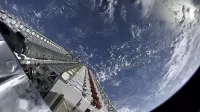
Starlink is a satellite internet constellation operated by Starlink Services...
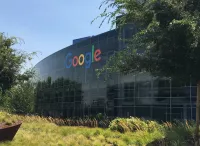
Google LLC is a multinational technology company specializing in online...
California is a U S state on the Pacific Coast...
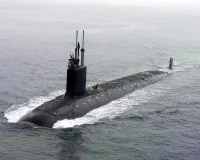
A submarine is a watercraft capable of independent operation underwater...
Trending

42 minutes ago NFL Week 13 Predictions: Caleb Williams Impact and Key Matchup Insights Revealed

42 minutes ago D'Andre Swift's Fantasy Outlook: Bounce-Back Potential Against Steelers in Week 12
42 minutes ago Luther Burden III, Cole Kmet, and A.J. Brown NFL tickets available for purchase.
2 hours ago Germany and Spain to battle in the 2025 Women's Nations League Final.
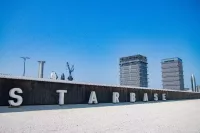
2 hours ago SpaceX Transporter-15 mission: Falcon 9 launch attempt, carrying 140 spacecraft to orbit.

2 hours ago Rome Odunze potential, Caleb Williams NFL Impact, and Fantasy Football Bench Choices
Popular
Aftyn Alyssa Behn is an American politician currently serving as...

William Franklin Graham III commonly known as Franklin Graham is...

Candace Owens is an American conservative political commentator and author...

XXXTentacion born Jahseh Dwayne Ricardo Onfroy was a controversial yet...

Marjorie Taylor Greene known as MTG is a U S...
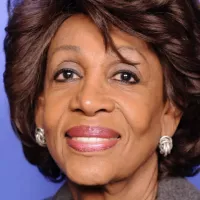
Maxine Waters is an American politician who has served as...
